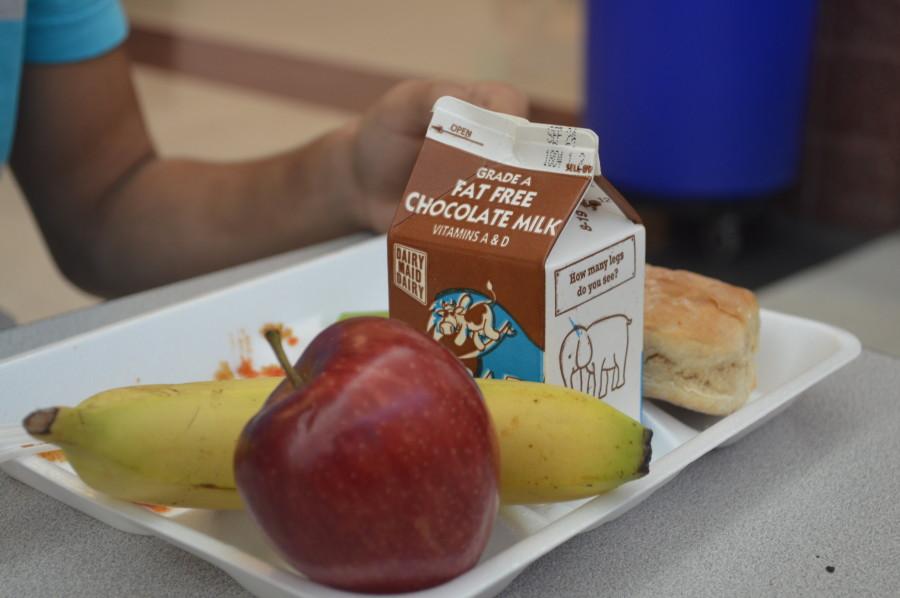Do you eat the cafeteria fruit provided?
Freshman Kevin Figueroa sits down for his daily cafeteria lunch
September 29, 2015
Many students aren’t eating the fruit they are required to take with their lunches.
Some students have complained about the fruit browning or not being ripe.
“Sometimes, the fruit I get with my lunch is bruised or damaged, ” senior Zach Yurich said. “I would eat school fruit if it was more fresh.”
Other students complain about the lack of variety. “I would eat the fruit if they had more of a variety I could choose from,” said junior Chris Ceballos. “They only offer a few choices per day, so sometimes I can’t have the one I want.” The most frequent choices offered are apples and oranges.
The Harvard School of Public Health estimates that “…60 percent of fresh vegetables and 40 percent of fresh fruit are being thrown away.”
Cafeteria Manager Carol Tull acknowledges that last year’s fruit and vegetable selections were widely panned by the student body, which influenced the decision to switch to a different produce vendor. She referenced oranges that were not very “orange” in color.
Tull said, “We are trying to get a different variety of fruit.”
Some students grumble about the requirement to take a fruit or vegetable when buying a lunch. “Most of the time, the fruit I take doesn’t taste very good,” senior Seth Brooks said. “I usually just throw it out. I would rather have the snacks that they had last year, like Oreos.”
Although students complain about taking a fruit during lunch, the Department of Agriculture, Fruit and Nutrition Service rules that, “By law, children in high school must be permitted to decline lunch items they do not intend to eat.”
Tull explains that, “If you make your lunch a meal, then you need to take a fruit along with that meal.” Otherwise, any student can grab a separate burger or drink without the fruit.
Students may wonder why they are forced to buy fruit. In the article, “America Tops List of 10 Most Obese Countries,” statistics show that the United States is the first of 10 other countries listed for being the most obese. The reason as to why students are being taught healthy eating habits so early is due to a change in the national school lunch program to combat the statistic that shows 25.8% of children are obese. There has been a 13% increase in obesity since 2010.
Not only is fruit being thrown out, but money is also being wasted. In Cleveland, Ohio, millions of dollars are spent on fruit that students don’t eat. In the article “Millions wasted in federal school lunch program” journalist Ron Reagan said, “An exclusive 5 On Your Side investigation reveals millions of dollars worth of fresh fruits and vegetables are being thrown in the trash in school lunchrooms in Ohio and across the country.” School lunches are a small issue, but millions of dollars are being thrown out.
“I hate seeing kids throw out their fruit,” said Tull.
Lancer Media conducted a poll for students asking for fruit feedback. The results show that 81% of students don’t like the fruit compared to the 19% that enjoy eating the fruit provided in school lunches.
Is it fruit phobia in general, or do our students dislike the specific fruits in the cafeteria?
Although the cafeteria management has changed its vendor, students have gotten into a routine of throwing away the fruit that they are required to take.



